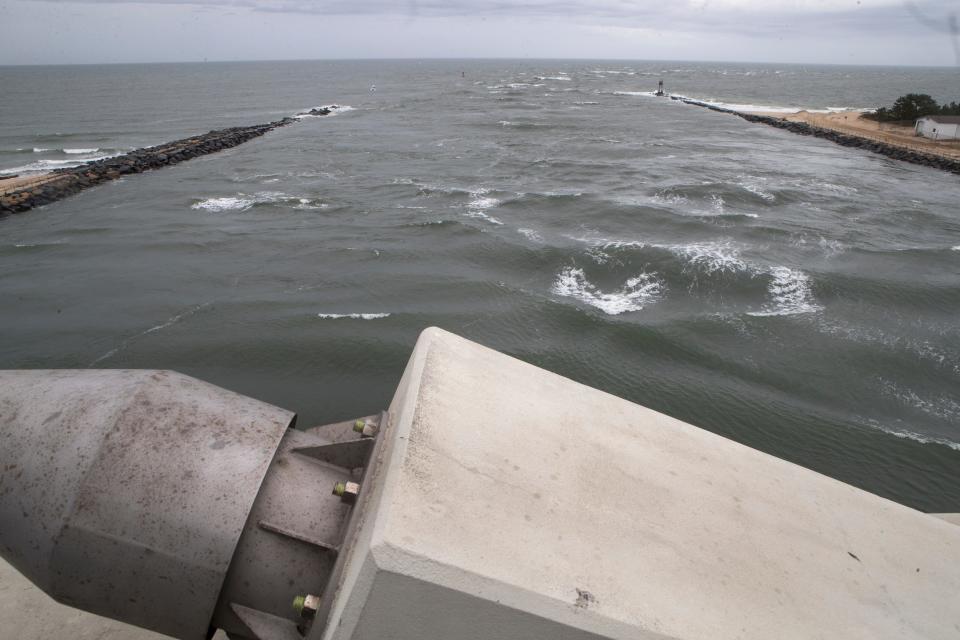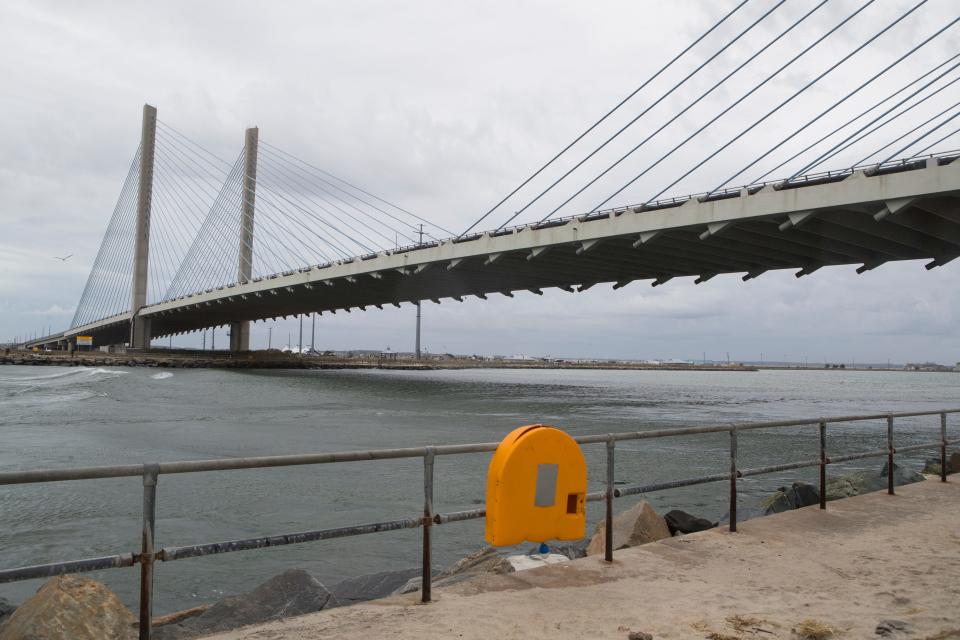How the Indian River Inlet went from a dream to a coveted haven for big fish anglers
“How easy it is for us to merely drift along day after day,” an unnamed writer for the Milford Chronicle mused on Oct. 25, 1935, “not appreciating, or even dreaming of the wonderful natural facilities right at our door … sure enough right at the Indian River Inlet mouth were great schools of fish trying to get in the Indian River.”
At the inlet, two fishermen, Wilmer Steele and George Keen, caught 18 drum (channel bass). The largest fish weighed 47 pounds and there were two or three small ones that weighed 15 pounds each.
The anonymous newspaper commentator speculated, “Just imagine what it would mean if the Indian River Inlet was really permanently opened — opened for transportation, opened as an entrance to a harbor, opened from a point of safety should Uncle Sam need it in case of war, opened to fish food, opened as a drainage for the thousands of acres of land, opened from a point of sanitation.

"Instead, it would prove to be the greatest investments in relation to the small cost that people will ask in amazement. ‘Why wasn’t this gold-edged investment made years ago?’”
For centuries, the Indian River Inlet linked the Atlantic Ocean and Delaware’s coastal bays. Those who lived on the shores of Indian River Bay and Rehoboth Bay used the inlet to ship their farm goods, cedar shingles cut from the Great Cypress Swamp, iron from the forges and furnaces around Millsboro, and other products to distant markets.
There was a time when the inlet attracted so much boat traffic that a number of small boatyards were established on the shores of the coastal bays to build and repair vessels.
BEACH SAFETY TIPS: It's jellyfish season at the Delaware beaches. Types you'll see and what to do if stung
In the 19th century, the inlet began to fill with sand, and by the dawn of the 20th century, the inlet was too shallow for even small vessels to use. Attempts by coastal residents using picks and shovels to reopen the inlet failed. An attempt to dynamite the inlet created a temporary waterway, but it, too, silted shut.
In 1938, federal funds financed the dredging of a new inlet, reinforced by stone jetties, and the Indian River Inlet became a permanent fixture on the coast. The dreams of the anonymous writer for the Milford Chronicle were on the verge of becoming reality. Unfortunately, World War II interrupted that dream.
In 1946, a year after World War II ended, former GI John J. Marsh of Rehoboth returned from his overseas duty with the Army, and he was determined to fulfill the Milford muse’s dream.

Marsh founded the Indian River Yacht Club Basin Corporation, with a harbor deep enough to accommodate 50 deep-sea fishing boats. Party boat owners took advantage of the new yacht basin, and within weeks, a steady parade of fishing vessels were sailing out of the inlet in search of a big catch.
At the beginning of September, The Public Press noted, “Last week Captain [Virden] Mitchell brought in a load of nine of the big game fish … [that] weighed from 150-175 pounds.”
The popularity of the Indian River Inlet’s access to the Atlantic fishing spots continued to grow, and, in 1952, six years after the first postwar fishing season, the New York Times reported, “About seven miles below Dewey Beach is Indian River Inlet, one of the most popular fishing spots in the whole region. Here, more than 150 boats, from small outboards to big party boats, are available for fishing either in the ocean or Indian River Bay.”
Coastal residents no longer had to speculate, “Just imagine what it would mean if the Indian River Inlet was really permanently opened.”

Principal sources
Milford Chronicle, Oct. 25, 1935.
The Public Press, Sept. 5, 1946.
New York Times, Aug. 3, 1952.
WHITE MARLIN OPEN: Founder talks past, future as Ocean City's big tourney at 50th year
This article originally appeared on Salisbury Daily Times: How Indian River Inlet opened the doors for big fish anglers

